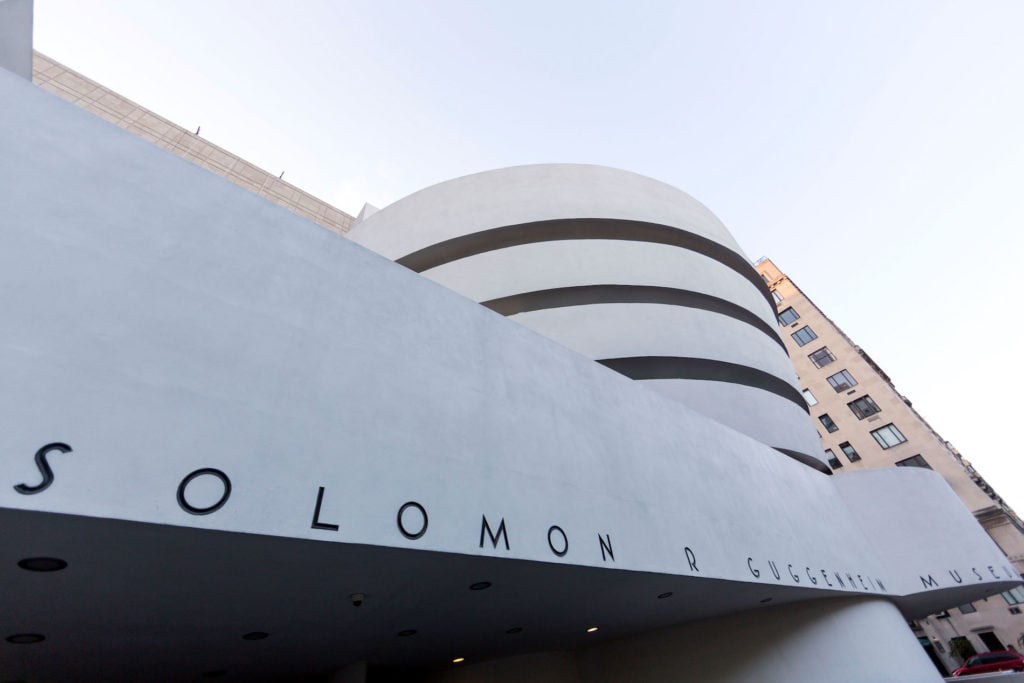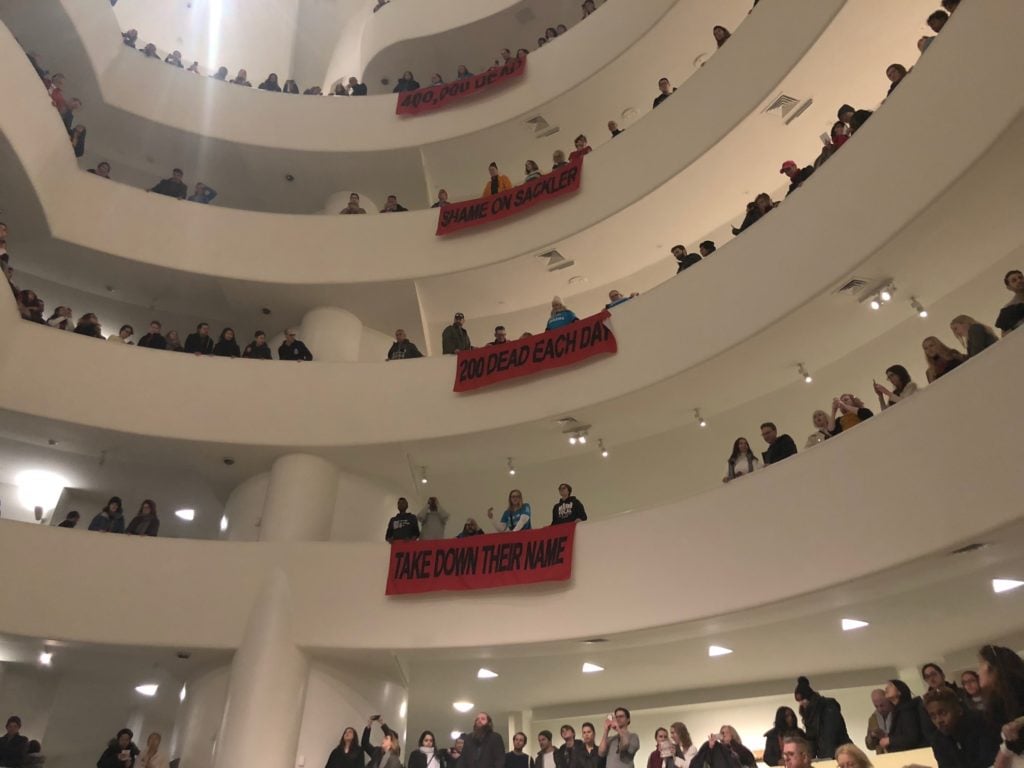Museums & Institutions
The Guggenheim Museum, Which Long Resisted Calls to Drop the Sackler Name, Has Finally Quietly Removed It
The National Gallery in London also removed the name from one of its galleries this weekend.

The National Gallery in London also removed the name from one of its galleries this weekend.

Sarah Cascone

New York’s Solomon R. Guggenheim Museum has become the latest institution to quietly drop the name of the Sackler family, who made their fortune selling the addictive painkiller Oxycontin.
The Sacklers had formerly been honored as the namesakes of the institution’s Center for Arts Education, but the museum’s website no longer includes any mention of the family, whose generous philanthropy over the decades extended to institutions on both sides of the Atlantic.
“The Guggenheim and the Mortimer D. Sackler family have agreed to rename the arts education center,” a museum spokesperson confirmed to Artnet News. “We believe this decision is in the best interest of the museum and the vital work it does.”
The Sackler name has become increasingly toxic in recent years after their role in the devastating opioid epidemic was publicized through the book Empire of Pain by Patrick Radden Keefe, the Hulu series Dopesick, and a high-profile bankruptcy case for the family’s company, Purdue Pharma. (The latest draft of the bankruptcy settlement will allow institutions in the U.S. to remove the family name without penalty.)

Sackler P.A.I.N.’s protest at the Guggenheim Museum. Photo by Caroline Goldstein.
Cultural institutions in particular have been pressured to stop associating with the Sacklers—and thereby whitewashing their names—through a campaign by advocacy organization Sackler P.A.I.N., founded by artist Nan Goldin after her own personal struggle with opioid addiction.
“Direct action works!” P.A.I.N. wrote in an email to Artnet News. “Our group has fought for over four years to hold the family accountable with focused, effective action, and with tremendous support from local groups that fought by our side. We hope that billionaires who shower institutions with their blood money watch the Sacklers’ cultural reckoning and take note that they can be next.”
The Guggenheim was one of the group’s most high-profile targets. In February 2019, P.A.I.N. staged a die-in at the museum, unfurling blood-red banners with statistics of opioid deaths in the U.S. and tossing fake prescription slips down into the six-floor rotunda.
Prior to the name change, which went into effect last week, representatives from the Guggenheim had consistently declined to comment about the center’s name, despite inquiries from Artnet News dating back to October 2020. A month after Goldin’s protest, the museum did agree to stop accepting funds from the Sackler family. (The Sackler Trust formally halted its philanthropic giving just days later.)

Protestors from Sackler P.A.I.N. stage a die-in at the Guggenheim. Photo by Caroline Goldstein.
In recent months, numerous institutions in both the U.S. and Europe have bowed to mounting public pressure and cut ties with the Sacklers once and for all.
In addition to the Guggenheim, the National Gallery in London stripped the Sackler name from its Room 34 this weekend after years of insisting that it had no plans to do so. The name had been in place since 1993, when Mortimer and Theresa Sackler funded the renovation of the room, rehanging works by British masters in a space once dedicated to 18th-century Italian paintings, according to the London Times.
“The Sackler Foundation and the National Gallery have jointly agreed that after 30 years the naming of Room 34 as The Sackler Gallery should come to an end,” the museum said in a statement supplied to Artnet News.
Museums that still carry the Sackler name are now something of an endangered species.
“To continue to display the Sackler name is to be complicit in the untold harms they’ve committed against society,” P.A.I.N. added. “The domino effect is in action now. The last museums still proudly displaying the Sackler name need to meet the moment.”
In New York, the American Museum of Natural History still has the Sackler Institute for Comparative Genomics and Sackler Educational Laboratory. In London, there’s the Sackler Courtyard at the Victoria & Albert Museum—where director Tristram Hunt has been outspoken in his continued support of the family. Both institutions did not immediately return a request for comment.
“The Mortimer and Theresa Sackler Foundation, and the Sackler Trust are no longer giving funds to cultural institutions, and on the 14 April they announced their intention to ‘work constructively with any institution that wishes to reassess its naming obligations to our family,’” a V&A spokesperson told the Art Newspaper. “The removal of names of historic donors is not currently the policy of the V&A, but we have taken note of this statement and will reflect on it.”